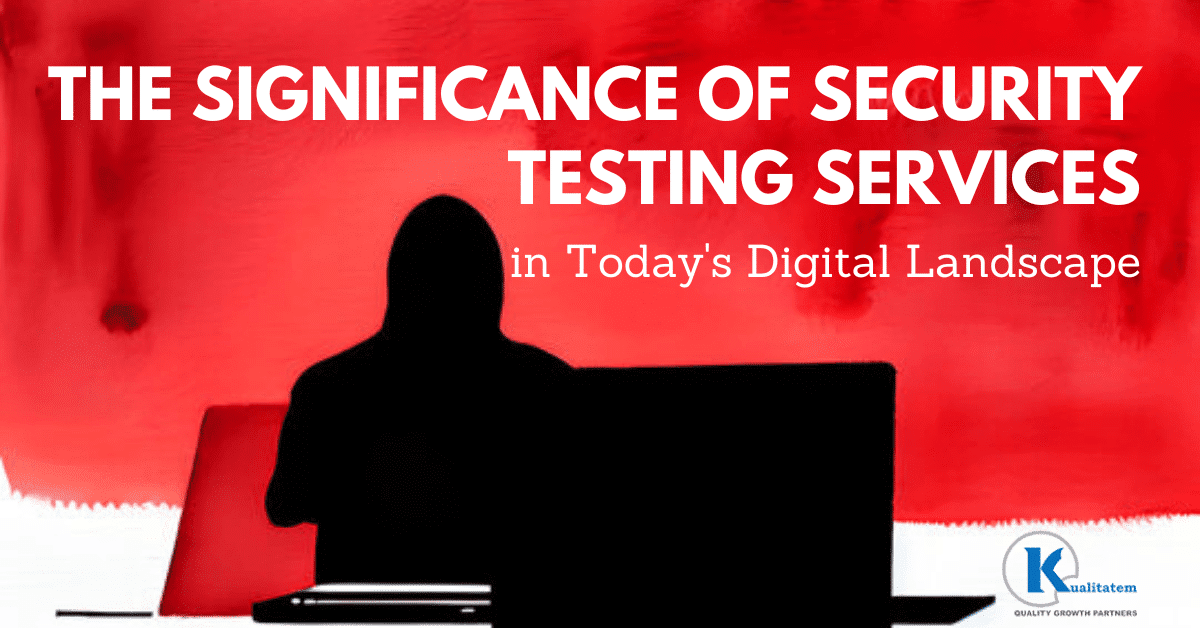The Significance of Security Testing Services in Today’s Digital Landscape

- September 12, 2023
- admin
In the contemporary digital realm, where threats lurk at every virtual corner, the role of security testing services has transcended the mere necessity to become a fundamental pillar of robust software development. This comprehensive exploration delves into the critical significance of security testing services within the intricate fabric of today’s digital landscape. By dissecting critical methodologies, benefits, and strategic implementation, we unveil these services’ pivotal role in safeguarding against relentless cyber threats.
Understanding the Dynamics of Modern Cyber Threats
As the digital ecosystem evolves, so do the tactics of cyber adversaries. The rise of sophisticated attacks, including ransomware, zero-day exploits, and data breaches, underscores the importance of a proactive approach to software security. Security testing services stand as the vanguard against these evolving threats.
In this increasingly interconnected world, where every aspect of our lives is digitized, the vulnerabilities within software systems present unprecedented opportunities for cybercriminals. Organizations and individuals store sensitive information, conduct financial transactions, and communicate over digital platforms. Such pervasive digitization has given rise to an alarming escalation in cyber threats. From state-sponsored attacks targeting critical infrastructure to cybercriminals seeking financial gains, the motivations behind cyber threats are diverse and ever-evolving.
Security Testing Services: A Holistic Approach to Digital Fortification
Security testing services encompass an array of methodologies aimed at comprehensively assessing software applications for vulnerabilities and weaknesses. From identifying coding flaws to evaluating system resilience, these services adopt a multi-pronged approach to ensure application robustness.
Penetration Testing: A Gateway into Vulnerabilities
One of the cornerstones of security testing services is penetration testing. Often referred to as ethical hacking, penetration testing involves skilled cybersecurity professionals attempting to breach an application’s defenses in controlled, authorized scenarios. By emulating the tactics of malicious hackers, penetration testing uncovers vulnerabilities that might otherwise remain concealed until exploited by cybercriminals.
The Intricacies of Penetration Testing in Security Testing Services
Penetration testing, often called ethical hacking, forms a core component of security testing services. By emulating real-world cyberattacks, penetration testing exposes vulnerabilities that malicious actors could exploit. This methodology provides a bird’s-eye view of potential entry points and points of failure within an application’s defenses.
Several phases mark the penetration testing process, each contributing to a comprehensive assessment of an application’s security posture. These phases include:
Planning and Reconnaissance
Penetration testers meticulously plan their approach, define the scope of the assessment, and gather information about the target system. This phase helps testers understand potential vulnerabilities from an attacker’s perspective.
Scanning and Enumeration
Testers use specialized tools to scan the target system for open ports, services, and potential vulnerabilities. Enumeration involves identifying users, groups, and system resources that could be leveraged for exploitation.
Gaining Access
In this phase, testers exploit identified vulnerabilities to gain unauthorized access to the system. This could involve using weak passwords, misconfigured settings, or software vulnerabilities.
Maintaining Access
Once access is gained, testers seek to maintain their foothold within the system. This phase simulates the actions of advanced persistent threats (APTs) that aim to remain undetected for prolonged periods.
Analysis and Reporting
The final phase involves a thorough analysis of findings and the creation of a detailed report. This report outlines the vulnerabilities discovered, their potential impact, and recommendations for remediation.
Penetration testing provides organizations with actionable insights into their vulnerabilities and the potential consequences of exploitation. Organizations can take proactive measures to mitigate risks and fortify their defenses by identifying weaknesses early.
The Power of Vulnerability Scanning in Security Testing Services
Automated vulnerability scanning tools scour applications, networks, and systems for known vulnerabilities and misconfigurations. This swift and proactive method enables rapid identification of weaknesses, reducing the window of opportunity for potential attackers.
Code Reviews in Security Testing Services: The Sentinel of Secure Coding
Code reviews entail meticulously scrutinizing an application’s source code to unearth vulnerabilities, coding errors, and potential security gaps. By analyzing the foundational principle, security experts can nip potential issues in the bud, ensuring a more secure software foundation.
Strategies for Strategic Implementation
A strategic approach is paramount to harness the full potential of security testing services. Effective implementation ensures a harmonious integration of security considerations throughout the software development lifecycle.
Integrating Security Testing Services into SDLC
Embedding security testing services within the software development lifecycle (SDLC) reinforces the notion of “security by design.” By weaving security assessments into every development phase, vulnerabilities are identified and addressed early, minimizing post-deployment risks.
Customized Assessments for Industry-Specific Needs
Different industries face distinct threats and regulatory requirements. Customizing security testing services to align with industry specifics ensures that vulnerabilities unique to a sector are addressed effectively.
Leveraging Automation for Enhanced Efficiency
Automation tools accelerate security testing processes and expand coverage. These tools facilitate rapid and iterative testing in agile development environments, bolstering overall application security.
Challenges and Best Practices
While security testing services are indispensable, navigating potential challenges is crucial for their effectiveness.
Balancing False Positives and Negatives
Security testing services can generate false positives, indicating vulnerabilities that don’t exist, or false negatives, missing actual vulnerabilities. Effective configuration and continuous validation of testing tools are crucial for mitigating this challenge.
Staying Ahead of Emerging Threats
The ever-evolving threat landscape requires constant vigilance. Staying informed about new vulnerabilities, attack vectors, and emerging trends ensures that security testing services remain relevant and practical.
Collaboration for Comprehensive Results
Effective security testing requires collaboration between development and security teams. Integrating security considerations within the development process ensures vulnerabilities are identified and resolved collaboratively.
Emerging Trends in Security Testing Services
As technology evolves, security testing develop in tandem to address new challenges and harness emerging opportunities.
AI-Powered Security Testing
Artificial intelligence (AI) and machine learning (ML) are poised to revolutionize security testing . AI-driven tools can analyze vast datasets to identify patterns that human testers might overlook, enhancing vulnerability detection accuracy.
Navigating the IoT Security Challenge
The proliferation of Internet of Things (IoT) devices introduces new testing frontiers. IoT security testing requires specialized methodologies to identify vulnerabilities across interconnected devices and networks.
In the digital age, the significance of security testing cannot be overstated. They represent the proactive shield against relentless cyber threats, ensuring software applications are resilient against sophisticated attacks. By embracing holistic methodologies, strategic integration, and collaboration, organizations can confidently navigate the digital landscape, knowing that their software assets are fortified against the ever-evolving threat landscape.











